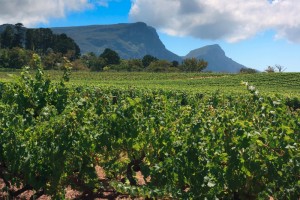Back in 1579 Sir Francis Drake called the mountain-topped Cape peninsula “the fairest Cape” he’d seen during all his years circumnavigating the world.
Though much has changed in the last 430 years, you’re bound to agree with Drake once you get a taste of the Cape and its crown jewel, Cape Town.
South Africa’s second city is not easy to put in a box. Home to over three million people and the country’s legislative machinery, Cape Town is renowned for its natural beauty, and yet it boasts a bustling business district and world-class convention centre. Much of the ‘Mother City’ has a Mediterranean air, and yet suburbs could be stand-alone villages for all their quirks and individuality. The sprawling poverty-stricken townships on the outskirts, which are common to all of South Africa’s cities, are a stark reminder of the wealth gap that 20 years of democracy has yet to resolve. And yet there’s a vibrant economy that stretches from the streets to the downtown skyscrapers.
There’s natural beauty in abundance, but equally in the faces of its people: the Cape Malays with their slave forebears and rich Islamic traditions; the Xhosa with ancient tribal roots and warm smiles; locals whose names hark back to England, France and Holland, yet are proudly South African; the Coloureds of mixed ancestry and proudly so. If ever the melting pot cliché held true, it’s in Cape Town.
Which makes the city a delight to discover, as its face and peoples change as you traverse the streets from the city center to the coast, the winelands to the mountaintops.
Most visitors — particularly first-timers — choose to base themselves in the city center, and rightly so. The heart of Cape Town remains a dynamic place, and having its attractions on your doorstep is a major advantage.
The Company’s Garden is part of the reason the city even exists: what started as a vegetable garden to supply passing ships is now a serene botanical garden well worth a wander. Above the gardens is the popular Natural History Museum, to one side the excellent National Gallery. A little further afield the Jewish Museum and national Parliament buildings. St. George’s Cathedral, made famous by Desmond Tutu, frames one end of leafy Government Avenue.
Below the gardens, the buzzing blocks of the city can’t fail to charm you. Wander the vivid streets of Bo Kaap that have been home to the Cape Malay community for centuries, explore Greenmarket Square with its colourful stalls, the shops of pedestrian-friendly St. George’s Mall, the antique vendors of Church Street and the historic buildings that frame the long, narrow streets that run down towards the seafront.
For Cape Town has long been a harbor city and it retains a strong connection to the sea. While the commercial harbor holds little interest, unless you’re arriving by cruise ship, the Victoria & Alfred Waterfront is a popular stop for every visitor to the city.
Built on the fringes of the working harbor, this world-class shopping and entertainment precinct – the “V&A” as locals dub it – offers hundreds of shops, dozens of restaurants and some of the Cape’s best-loved attractions. Want to see the Two Oceans Aquarium, take a boat cruise, or visit iconic Robben Island? You’ll find them all at the V&A.
From the harbourfront, the imposing massif of Table Mountain rises up impressively behind the city. One the western edge, the wonderful Table Mountain Cableway whisks visitors to the summit in mere minutes. A ride to the top is another must-do in the city and from up here you’ll marvel at the necklace of beaches that lie a kilometer beneath your feet.
Just minutes from the city, these are the sparkling white sands and aquamarine waters of Clifton and Camps Bay, where lavish penthouses run into the millions… of dollars, not rands. The water here may be cold but the vibe is hot. Hot like Camps Bay, with its palm-lined boulevard and model-clad cocktail bars. This could be Monaco or Miami.
Further down the western edge of the city, the Atlantic lapping the scenic Victoria Road all the way, you’ll find the charming village of Hout Bay. The fishing harbour dominates what is one of Cape Town’s more charming commuter suburbs, with great restaurants and shopping in a laid-back environment. For scenic drives, the nearby Chapman’s Peak is unbeatable.
From Hout Bay the choice is easy: further south to the rocky promontory of Cape Point, or up and over Constantia Nek to the wine lands of Constantia. Or, rather, do both.
Cape Point is unmissable, and you can set aside an entire day for the drive there and back. Explore the historic lighthouses, wander on empty beaches and keep a keen eye out for the zebra and antelope that call this section of the Table Mountain National Park home. It’s wild, rugged and spectacular, but remember; this isn’t the southernmost tip of Africa, where two oceans meet. I’m afraid that’s 200 kilometers east, at Cape Agulhas.
Never mind, the False Bay coastline that dominates the southern edge of Cape Town is a delight. Quaint suburbs will enchant you: Simon’s Town with its naval history and charming harbourfront, Fish Hoek for its safe bathing and warm clear waters, and bohemian Kalk Bay for the traditional fishing harbour and necklace of quirky boutiques. A seafront suburban train line runs the length of them, making for one of the most spectacular urban rail journeys in the world.
While the Atlantic Seaboard is about short skirts and killer heels, the False Bay side is comfortable in its own skin, a flowing skirt and flowers in her hair. Anything goes, as long as it’s relaxed. You’ll love it.
Past Muizenberg and you’re almost in the winelands. The vineyards of Constantia are some of the oldest in the country, and some of the finest. The likes of Klein Constantia, Steenberg, Uitsig and Buitenverwachting are all worth a visit for both the wonderful views and the wines.
And then… well, perhaps back to the city for a break. There’s still the West Coast to explore, with its postcard views of Table Mountain and dramatic beaches. Or the shopping paradise of Canal Walk mall. The Cape Flats offers up plenty of apartheid history and the colourful townships, or plan a visit to the genteel winelands of Stellenbosch and Franschhoek.
Adventure, shopping, beaches, history, culture, fashion, food, wine… as I say; it’s hard to put Cape Town in a box.





